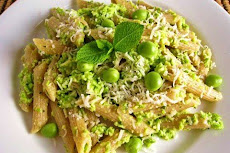
By Andrew Hough, The Daily Telegraph
7:00AM BST, 14 Oct 2009
The distraction of eating and drinking water for pleasure acts as a natural way of beating pain, the researchers discovered.
The natural painkiller, discovered during testing in rats, is the first to demonstrate such a powerful effect, said the study published in the Journal of Neuroscience.
While the study was carried out in animals, the team, from the University of Chicago, believe the same effects can be seen in humans.
"It's a strong, strong effect, but it's not about hunger or appetite," said lead author Peggy Mason, a professor of neurobiology.
"If you have all this food in front of you that's easily available to reach out and get, you're not going to stop eating, for basically almost any reason."
In the experiments, the researchers gave rats either a chocolate chip to eat or sugar water to drink as they lit a light bulb underneath their cages.
The heat from the bulb normally caused the rodents to lift their paws.
But when the rats ate chocolate or drank water, their pain response to the heat was dulled.
They did not lift their paws as quickly as when they were not eating. They also kept on eating.
Dr Mason said eating stimulated a system in the part of the brain that controls subconscious responses, which was known to blunt pain.
"This really shows it has nothing to do with calories," she said.
"Water has no calories, saccharine has no sugar, but both have the same effect as a chocolate chip.
"It's really shocking."
The natural form of pain relief may help animals in the wild avoid distraction while eating scarce food, but in modern-day humans, it could be contributing to over-eating and obesity, she said.
Previous studies have indicated that only sugary substances had a pain-dulling effect, but the latest study found the same regardless of whether they were nibbling chocolate or drinking water.
Dr Mason suggested doctors change the way they calm patients' nerves.
"Stop giving patients lollipops," she said.
"Ingestion is a painkiller but we don't need the sugar. Water blunts pain, too.”










